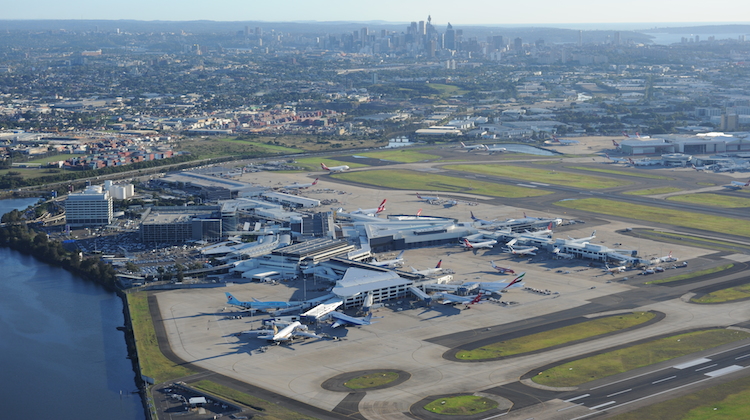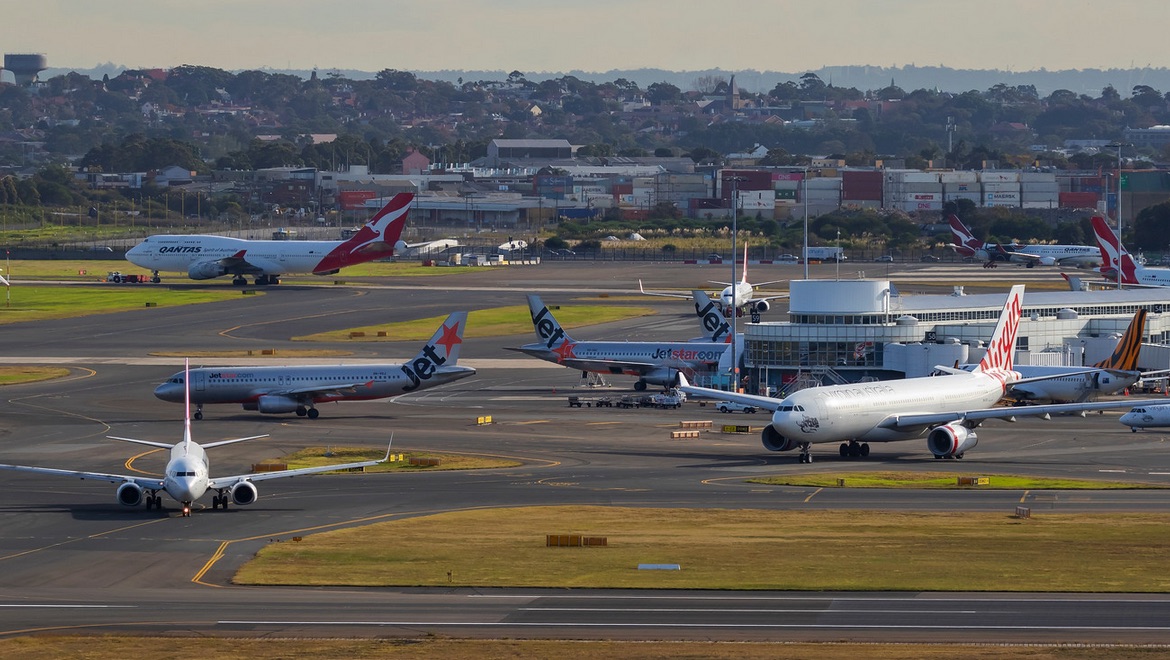
Sydney Airport chief executive Geoff Culbert says there are compelling reasons to relax outdated operating restrictions regarding aircraft movements to provide greater flexibility for recovery from disruptive events.
Under current rules, there can be no more than 20 aircraft movements in a 15-minute period between 0600 and 2300. The airport has said previously that made it difficult to recover from disruptions should, for example, thunderstorms close the airfield or strong winds restrict Sydney Airport to single-runway operations.
Culbert said having a daily movement cap – rather than one measured in 15-minute blocks – would help the airport better recover from those types of events while leaving the curfew and the total number of flights allowed to operate to and from Sydney unchanged.
“I’m sure everyone in this room has had flights cancelled or diverted or you’ve done laps over Dubbo or out over Botany Bay waiting for the next 15 minutes to click over,” told delegates at the CAPA – Centre for Aviation Australia Pacific Aviation and Corporate Travel Summit in Sydney on Wednesday.
“There’s countless overnight stays that are generated as a consequence of delays.
“And this is really hurting the efficiency of the airport and our ability to operate the airport at maximum efficiency.”
Calls to change how the Sydney Airport cap is calculated have also come from Australia’s Productivity Commission (PC).
The Commission’s draft report into its inquiry of the economic regulation of Australia’s airports published in February called for the Australian government to commission a public review of Sydney Airport’s slot management scheme to consider possible reforms to the current arrangements.
The report said the average number of aircraft movements rarely exceeded 70 movements an hour, even in peak periods. This was well below a potential 80 aircraft movements an hour allowed under the cap.
“Changes that increase the flexibility of the movement cap and that target noise outcomes more directly would most likely improve the operational efficiency of Sydney Airport as well as airlines,” the draft report said.
“This could be done in a way that meets current noise objectives, but that reduces unintended consequences from the existing arrangements.”

The airport described the current slot cap as a “blunt and inflexible instrument” in its submission to the PC inquiry.
Further, the submission said a conservative estimate of the productivity loss caused by the cap was likely to be “upwards of $10 billion per annum”.
Culbert told the CAPA event the current arrangements made it more difficult to get airlines to operate to Sydney.
“The operating restrictions we have at Sydney Airport are the most restrictive operating restrictions of any airport in the world,” Culbert said.
“There is not a single airport in the world of our size that has the operating restrictions that we have and they are a deterrent to us being able to attract airlines into Sydney Airport.”
Culbert’s proposed change, which required the federal government to amend current legislation governing Sydney Airport, received support from one of the architects of the aircraft movement cap.
John Sharp, currently deputy chairman at Regional Express (Rex) and former federal minister for transport, said he believed the current government would be open to revisiting the aircraft movement cap.
“Geoff’s probably got the best opportunity he is going to have, probably will have, for the last 10 years,” Sharp said at the CAPA conference where he was part of a panel discussion with Culbert.
“I think he has got a chance. He won’t get everything that he wants through – that’s just not real world – but I think on something as simple as the 80 movements per hour cap, I think he can manage that.”
Sharp said the hourly movement cap was an arbitrary figure.
“I totally agree with what Geoff said and I sympathise enormously with him,” Sharp said.
“The 80 movements per hour cap, there’s no science to it whatsoever, we just picked a figure out of the air. It had nothing to do with what’s the capacity of Sydney Airport, I can’t even remember asking the question.
“Why did we pick 80? Because the Labor party – I was in the coalition – had a cap of 85 movements per hour. We thought 80 would sound better.”
















David Wilesmith
says:The airport should operate 24/7 before they even think about Badgerys creek.
Bill
says:Have a look at the federal and state electorates in and around the airport and you’ll realise why Sydney’s second airport is being built in the western suburbs.
Andrew
says:No, it shouldn’t be 24/7. There are few comparable airports so close to the cbd globally. You can’t basically dilapidate entire suburbs through noise pollution. Out people wanting to milk the system, who live miles from KSA.